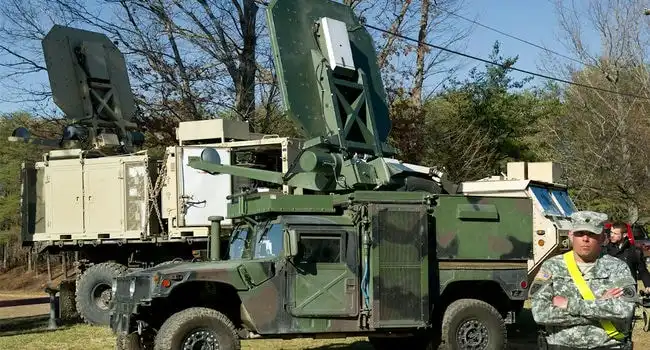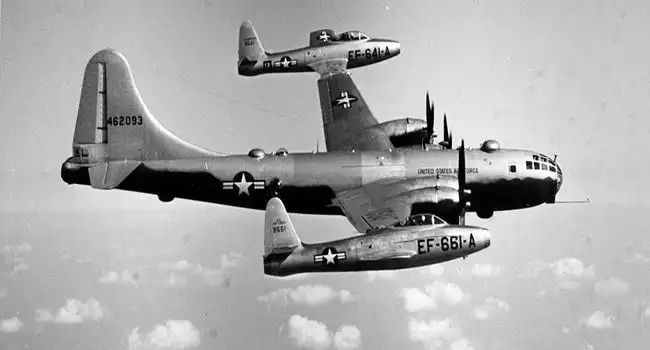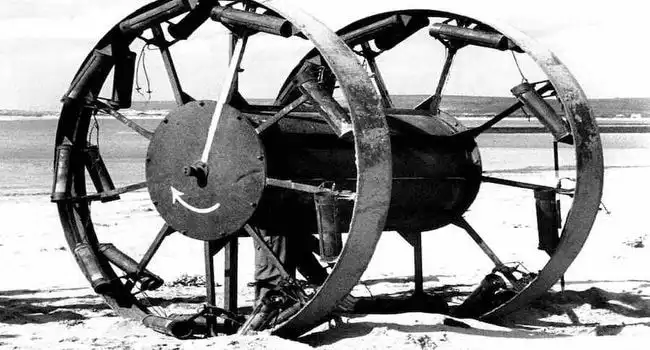Throughout history, military endeavors have been met with some serious successes, leading to the development of powerful technologies and strategies that have shaped the course of human history. But along with these successes have come some spectacularly strange (and expensive) failures. Here, we explore some of the bizarre and most unusual failed military projects of all time.
10- Gay Bomb

Photo Credit: ABC
The U.S. military has a long and storied history of attempting to develop unusual weapons, and the “gay bomb” is no exception. The idea behind the gay bomb was to release a chemical agent that would turn enemy combatants into homosexual lovers. The goal of the weapon was to make the enemy so distracted by their newfound love that they would become ineffective in battle. However, the proposal was ultimately rejected due to the questionable morality and practicality of the weapon. Despite the fact that the gay bomb was never actually developed, it remains an interesting footnote in military history. It serves as a reminder that even the most outlandish ideas can be seriously considered in times of conflict. The gay bomb also demonstrates the importance of weighing the ethical implications of any weapon before it is developed. After all, even the most powerful weapons can have unintended consequences.
9- Flying Saucer

Photo Credit: Yahoo
The military has a long history of experimenting with weird and wacky projects. One of the most infamous is the ‘Flying Saucer’, an attempt to create a craft that could fly using discs. The project was first proposed in the 1940s, but was abandoned due to cost, technical difficulties, and the fact that the concept was considered too outlandish. Despite this, the idea of a flying saucer never completely died out, with several attempts being made in the 1950s and 1960s to create a functioning craft. Unfortunately, all of these efforts ended in failure, with the project being officially scrapped in the early 1970s. While the Flying Saucer project was a huge flop, it did leave an impression on popular culture, with the image of a UFO being closely associated with the concept.
8- Pain Ray

The U.S. military has a history of attempting projects that don’t quite make the cut. One such example is the Active Denial System (ADS), otherwise known as the Pain Ray. This technology was designed to disperse crowds by emitting a high-power microwave beam that causes an intense burning sensation. The U.S. military believed it could be used to control crowds without causing any permanent damage. Unfortunately, the project failed to produce the desired results and was ultimately scrapped. Despite its failure, the Pain Ray still remains a fascinating example of military experimentation gone wrong. It serves as a reminder of the importance of rigorous testing and evaluation before any project is put into action.
7- Project Tip-Tow

In the 1940s, the U.S. Air Force pioneered a revolutionary technique to extend the range of their fighter jets: Tip-Tow. This punny method involved attaching two F-84 Thunderjets wing-tip to wing-tip with a B-29 bomber and then launching them to their target. Although this technique showed great potential, it was eventually abandoned when air-to-air refueling and long-range bombers were introduced.
6- Project Pigeon

Photo Credit: Wikipedia
Project Pigeon was a military experiment conducted by the US during World War II. It proposed to use pigeons to guide missiles to their targets. The pigeons were trained to peck at a target in a projection on a screen in a cockpit. The plan was to attach the pigeons to the missile and they would guide it to the target. Unfortunately, the experiment failed due to the pigeons’ inability to operate the complex machinery. The pigeons were also easily distracted by food, lights, and other objects. The experiment was abandoned and the pigeons were released. Despite its failure, Project Pigeon was an ambitious attempt to use animal intelligence to solve a military problem.
5- Project Orion

Project Orion was an ambitious attempt to build a nuclear propulsion spacecraft in the 1950s and 1960s. It was designed to use nuclear bombs as propellants, allowing aircraft to achieve interstellar travel. The project was ultimately abandoned due to the unacceptably high risk of radioactive fallout. Despite numerous attempts, the project never gained enough traction to progress beyond theoretical studies. In the end, the difficulties of controlling the nuclear explosions and the potential of nuclear fallout were deemed too high to justify the project. The team ultimately concluded that the risks of the project outweighed its potential rewards. The legacy of Project Orion lives on as a reminder of man’s ambition to explore the unknown.
4- 2B1 Oka

The Soviet Union’s 2B1 Oka, a self-propelled artillery system, was a failed military project. Designed to bridge the gap between conventional artillery and tanks, the 2B1 Oka had an armament of 420mm main gun. It was intended to be used in combined arms tactics with tanks and infantry. However, it proved to be too heavy and slow to be of use. Its armour was also too thin to protect it from enemy fire. The 2B1 Oka was difficult to maintain and suffered frequent breakdowns. Furthermore, it was expensive and not very reliable. As a result, the Soviet military eventually abandoned it and the 2B1 Oka became a failed military project.
3- 1K17 Szhatie

The Soviets developed the unique 1K17 Szhatie (also known as 1К17 Сжатие – ‘Compression’ in Russia, and as the ‘Stiletto’ in NATO reporting) just before the collapse of the Soviet Union in 1991. This laser-armed tank, designed as a type of anti-missile system, could disable enemy optoelectronic systems, such as sights, scopes and cameras. The 1K17’s 12 high-power lasers could lock on and blind any enemy vehicle with its sophisticated aiming systems for the time. The project also had a high cost, leading to its eventual cancellation. Despite the failure, the project did lead to some useful advancements in unmanned vehicle technology. It also sparked interest in further research in the area of robotic warfare.
2- Panjandrum Rolling Bomb

Photo Credit: All Thats Interesting
The Panjandrum was an experimental British military project in World War II. It was designed as a heavy-duty, self-propelled, barrel-shaped bomb. Two large wooden spoked wheels were attached to the bottom of the barrel, and two smaller wheels on the sides. Rockets were attached to the sides of the barrel, to provide propulsion. The plan was to roll the bomb toward the enemy, and then have it explode close to their positions. Unfortunately, the project failed. Its rockets didn’t provide enough power and the device would veer off track. Its wooden wheels were destroyed by the beach terrain and the device tipped over. Further, the two men had difficulty controlling it. In the end, Panjandrum was too dangerous to use in combat and was abandoned.
1- Kitty Spies

The CIA put $20 million into their “off the books” project, Operation Acoustic Kitty, in the 1960s. This project aimed to use non-human agents for espionage purposes and based their plan around cats, assuming they would be cooperative. The process was inhumane for the chosen felines as they had to be slit open and have batteries and wires inserted. On its first mission, the cat was struck and killed by a car before reaching its target. By 1967, the project was classified as a failure and according to NSA employee Jeffrey Richelson, it was unclear for how long the cat would have survived even if it hadn’t been run over.


